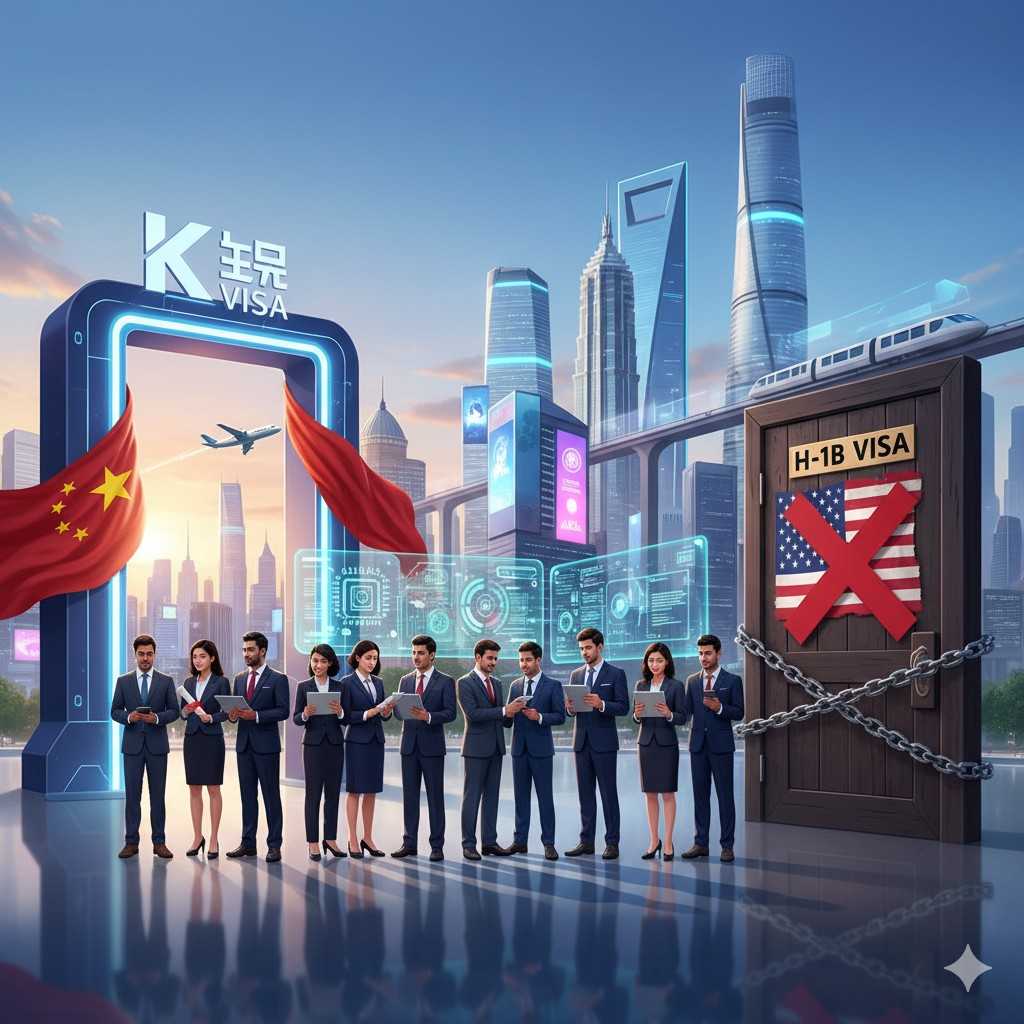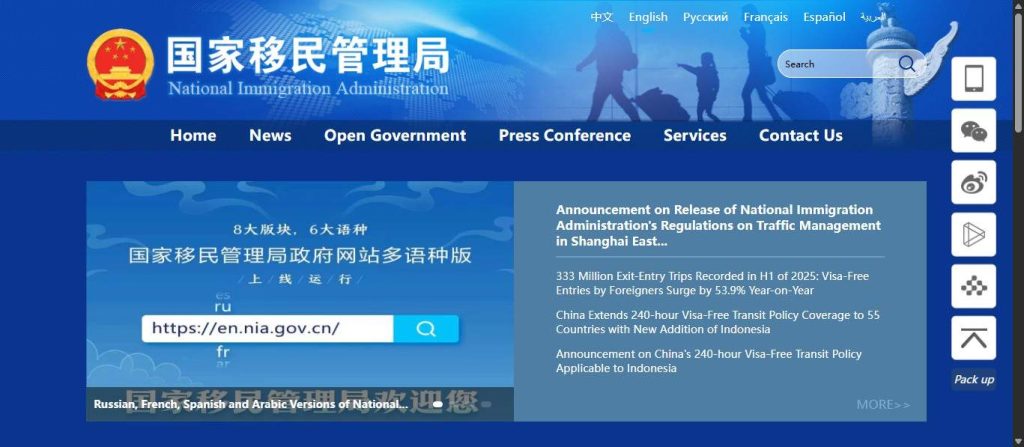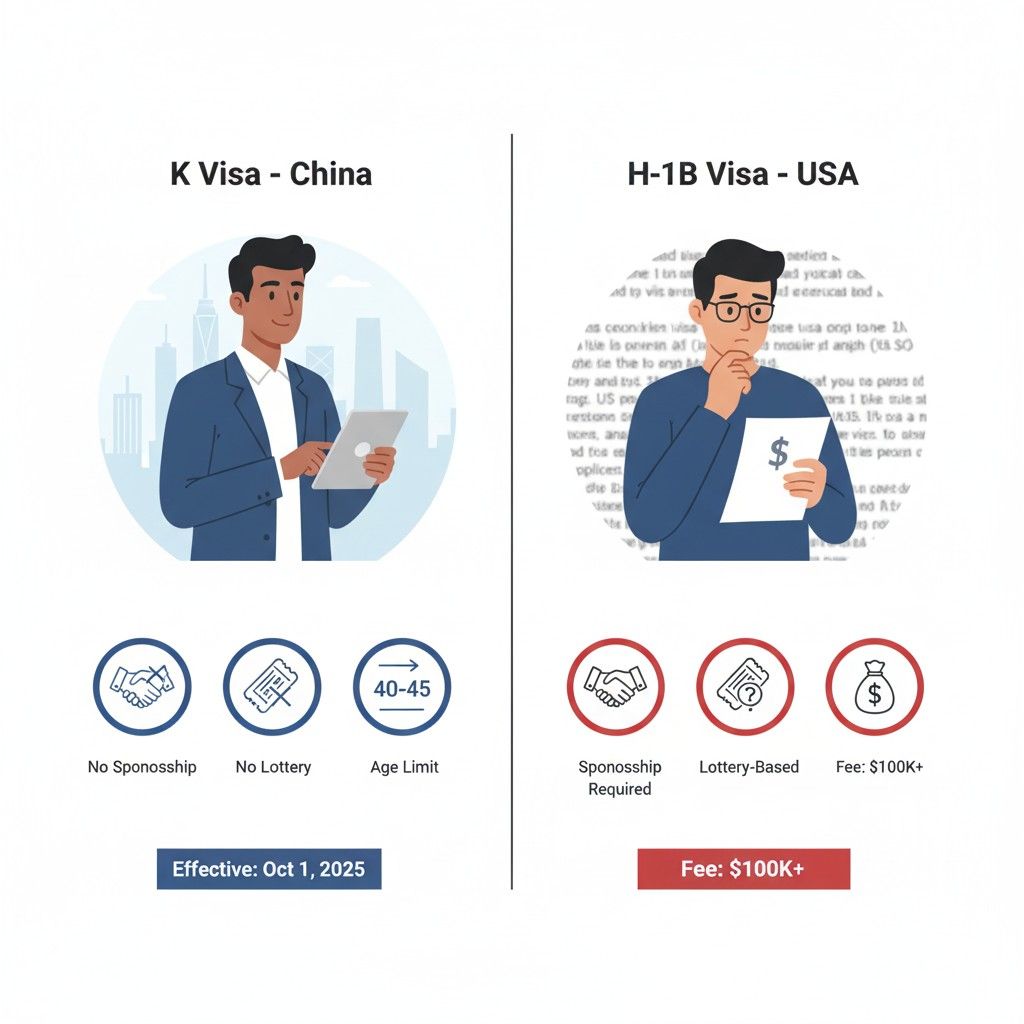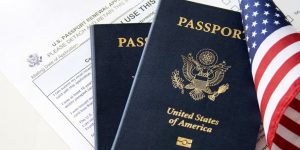China has launched a new H-1B style K visa targeting young STEM professionals, effective October 1, 2025. This initiative aims to attract South Asian talent by providing a flexible pathway for skilled professionals seeking international work opportunities amid rising fees and stricter rules for U.S. H-1B visas.
With the K visa, China offers a timely alternative for professionals looking for global experience, longer stay options, and career growth in technology, research, and innovation sectors.
This article explores the China K visa, its eligibility, benefits, and practical advantages for South Asian STEM professionals considering China as their next career destination.
What Is China’s New K Visa For STEM Talent?
China has unveiled a new “K visa” category aimed at attracting young and highly skilled professionals from across the world, particularly in the fields of Science, Technology, Engineering, and Mathematics (STEM), with new entry-exit rules set to start on October 1, 2025.

President Trump implemented a $100,000 fee for H-1B applications in September 2025, creating urgent demand for alternatives.
This visa initiative supports China’s talent-driven development strategy through a streamlined, sponsor-free pathway.
The government recognizes that younger professionals offer longer-term contributions to China’s innovation economy and technological advancement initiatives.
Reasons Why The K Visa Can Appeal To South Asia
The timing coincides with significant H-1B challenges, including increased fees and uncertainties surrounding the lottery.
This new visa shows China’s shift toward a more open and innovation-driven country, potentially offering an alternative pathway for professionals facing H-1B difficulties.
Recent H-1B changes include significant fee increases (up to $100,000+ in 2025) and continued lottery system diversity visa uncertainties. The timing of China’s K visa launch coincides with these challenges.
K Visa Eligibility Requirements and Age Limits
The K visa transforms China’s immigration approach by prioritizing merit-based selection over employer-dependent systems. Government reports suggest the visa maintains strict criteria focused on attracting exceptional young talent.
The Talented Young Scientist Programme maintains an upper age limit of 45 years, while the Outstanding Young Scientists (Overseas) Fund Project targets professionals aged 40 years maximum.
These age restrictions ensure China attracts professionals at their career peak.
Who Can Apply For China’s K Visa?
The K visa targets specific professional profiles with clear qualification standards:
- Applicants must hold a STEM degree (in science, technology, engineering, mathematics) at a bachelor’s level or higher, or be engaged in relevant studies or research at a recognised institution.
- Age limit of 40-45 years (specific limit still being finalized).
- Open to international youths who have earned undergraduate or STEM degrees from leading domestic and global research institutions.
These eligibility criteria position the K visa as an accessible pathway for qualified professionals seeking international career advancement opportunities without traditional bureaucratic constraints.
K Visa Key Benefits Over Traditional Chinese Work Visas
Earlier, there was a Transit visa for the duration of 1 to 2 days for China, creating significant barriers for international professionals. The K visa eliminates these restrictions entirely.
- Unlike existing visas, the K Visa offers more flexibility as applicants do not need employer sponsorship.
- Greater flexibility by removing requirements like employer sponsorship.
This streamlined approach reduces application complexity and enables professionals to explore opportunities independently before securing employment arrangements.
China K Visa Cost and Application Process
Application procedures and costs are expected to be finalized before the October 1, 2025, launch date. Applicants will need to prepare relevant materials such as academic credentials, research achievements, and proof of employment or enrollment.
The structured application process follows these steps:
Step 1: Visit the official Chinese immigration portal to access the required documentation and forms.

Step 2: Submit verified academic transcripts from recognized educational institutions.
Step 3: Compile a research portfolio showcasing professional achievements and publications.
Step 4: Complete biometric enrollment at designated Chinese consular offices.
Step 5: Attend a final assessment interview to evaluate professional qualifications.
This systematic application process ensures qualified candidates can navigate requirements efficiently while meeting China’s standards for international talent acquisition.
How Does the K Visa Compare To The H-1B Amid Recent Changes?
China’s K visa launch strategically targets professionals affected by recent H-1B policy changes.

The timing directly responds to mounting restrictions that limit access to US employment opportunities. President Trump’s September 2025 proclamation fundamentally altered H-1B accessibility through substantial fee increases.
China K Visa vs H-1B Visa Comparison:
| Feature | China K Visa | US H-1B Visa |
|---|---|---|
| Employer Sponsorship | Not required | Required |
| Age Limit | 40-45 years | No age limit |
| Lottery System | No | Yes (since 2020) |
| Recent Fee Changes | TBD | $100,000+ increase in 2024 |
| Effective Date | October 1, 2025 | Annual process |
| Target Audience | Young STEM professionals | All skilled workers |
This comparison reveals significant advantages for young professionals facing H-1B lottery uncertainties and financial barriers that now exceed six-figure amounts.
This makes China’s K visa an attractive alternative for career-focused individuals seeking stable immigration pathways.
Opportunities and Challenges For Indian STEM Professionals
The K visa presents distinct advantages and considerations for Indian professionals evaluating China as their career destination amid current global immigration dynamics.
Career Prospects in China’s Tech Ecosystem:
China’s expanding technology sector creates opportunities across artificial intelligence, biotechnology, and advanced manufacturing industries.
The K visa framework enables direct access to these growing innovation sectors without traditional sponsorship requirements.
Professional advancement opportunities exist within China’s technological development initiatives, supported by substantial government investment in research infrastructure.
Potential Challenges to Consider:
Several considerations require careful evaluation before pursuing the K visa pathway:
- The regulatory framework is still developing.
- Cultural and language barriers.
- Career mobility between countries.
The K visa represents China’s strategic response to global talent competition, offering South Asian STEM professionals a viable alternative amid H-1B uncertainties.
Why Now? Understanding China’s K Visa Launch
The launch of China’s K visa comes at a critical time for global tech talent, especially from South Asia.
With the U.S. H-1B visa fee recently increased to $100,000, many skilled professionals are facing higher costs and stricter eligibility requirements. China is seizing this opportunity to attract top talent by offering a simpler, more flexible alternative through the K visa.
This visa allows professionals to work, study, or engage in entrepreneurial activities without the need for employer sponsorship, making it an attractive option for those looking for international opportunities amid rising barriers in the U.S. system.



